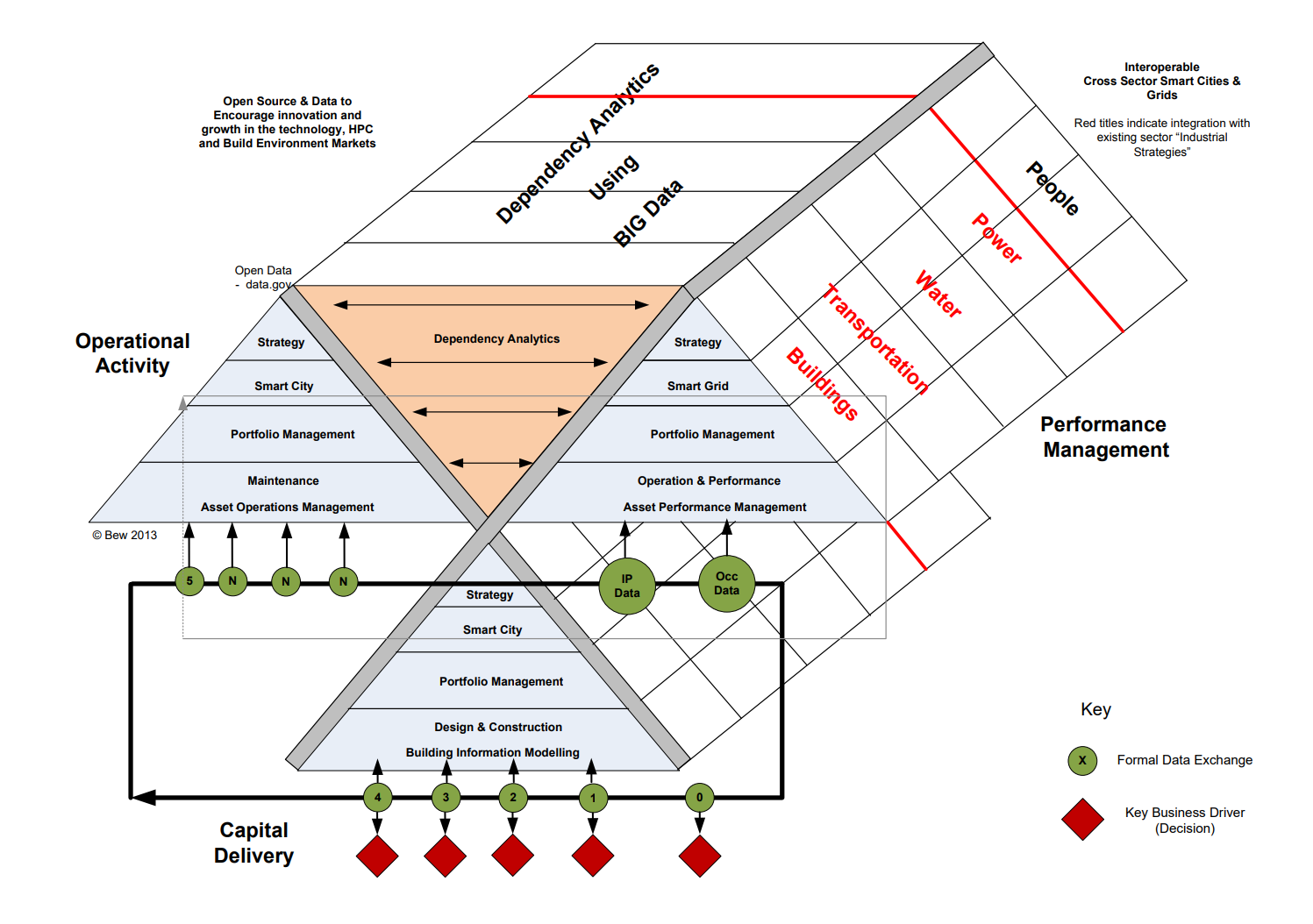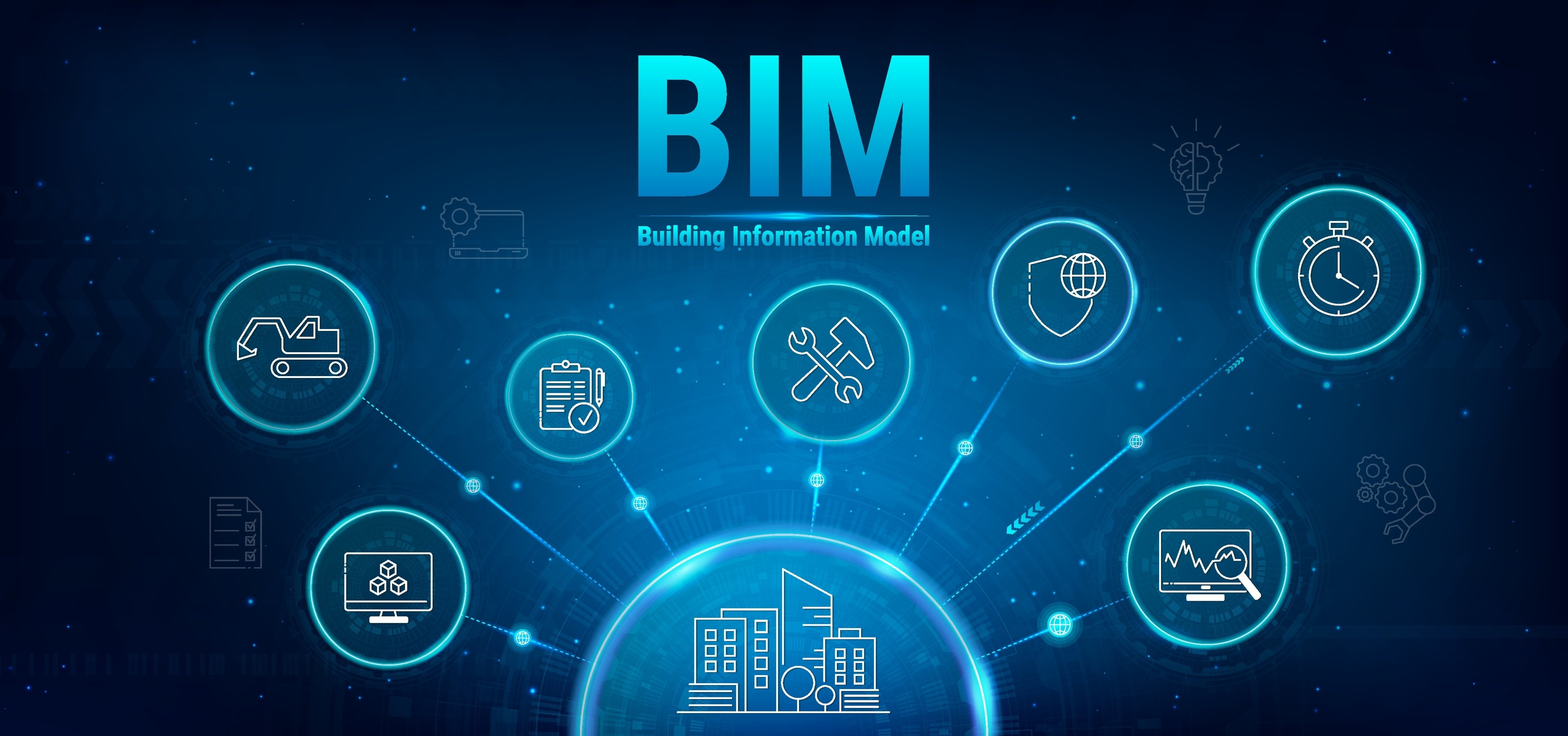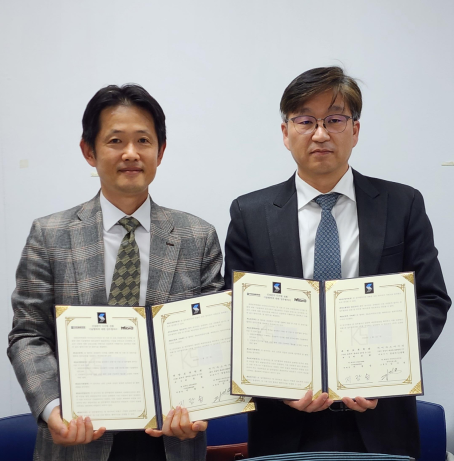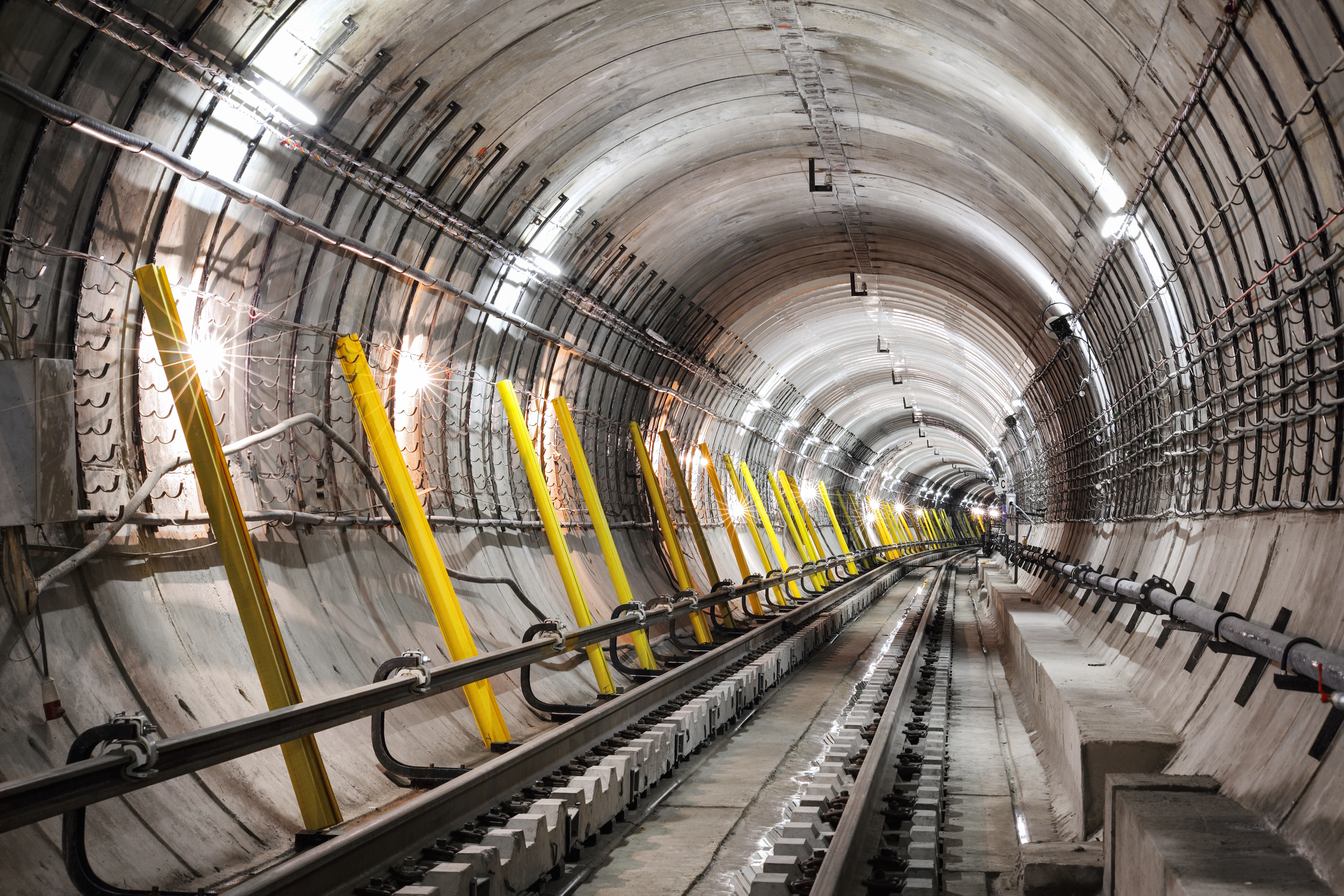Please fill out the Download Section (Click here) below the Comment Section to download the FULL PDF File.
Table of Contents
*Click the content to move to the section
1. Introduction
2. Global Cases of Smart Construction
2.1 Case of UK
2.2 Case of Japan
2.3 Case of Singapore
3. Digital Construction Standard
4. API in Smart Construction
5. Smart Construction in Korea
6. Conclusion
1. Introduction
The construction industry is currently experiencing a significant shift towards digital transformation, with emerging technologies such as Building Information Modelling (BIM), drones, and Internet of Things (IoT) revolutionizing how construction projects are planned, executed, and monitored.
One of the key trends driving this transformation is the adoption of smart construction technologies, which use data and technology to optimize construction processes and improve efficiency.
1.1 What is Smart Construction?
Smart construction refers to the use of advanced technologies such as machine learning, artificial intelligence, and telematics to streamline construction processes and improve productivity. This technology utilizes real-time data and insights to enhance decision-making and optimize resource allocation. It encompasses a range of solutions such as construction management software, machine control systems, drones, and telematics.
* Telematics refers to the use of telecommunications and informatics to transmit and receive data from remote locations, often using wireless devices. In the context of construction, telematics can be used to monitor and track the location, performance, and status of equipment, vehicles, and workers, in real-time.
1.2 Importance of Smart Construction
The importance of smart construction lies in its ability to deliver significant benefits to construction companies, including:
-
Improved Efficiency: Smart construction technologies can significantly improve the efficiency of construction projects, reducing waste and increasing productivity.
-
Enhanced Safety: Smart construction technologies can help reduce safety risks by providing real-time insights into potential hazards and allowing for proactive measures to be taken to address them.
-
Cost Savings: Smart construction technologies can reduce costs by optimizing resource allocation, reducing waste, and minimizing downtime.
-
Improved Quality: Smart construction technologies can help ensure that construction projects meet or exceed quality standards, by providing real-time data on construction progress and quality control.

2. Global Cases of Smart Construction
Smart construction has been implemented in various parts of the world, including the United Kingdom, Japan, and Singapore.
In the UK, the use of BIM has become mandatory for government projects, and this has led to a significant improvement in construction efficiency and cost savings. In Japan, smart construction technologies such as drones and 3D printing have been used to construct buildings and bridges, and in Singapore, the use of smart technologies such as IoT sensors and BIM has led to significant improvements in safety and efficiency.
2.1 Smart Construction in the UK
The UK is a leading country in smart construction and has been investing in digital technologies to transform the industry. Key initiatives and developments in smart construction include Digital Built Britain (DBB), Building Information Modeling (BIM), Construction Innovation Hub (CIH), Offsite Construction, and the Digital Twin.
- DBB aims to improve productivity, reduce costs, and enhance collaboration across the industry.
- BIM enables real-time collaboration, reduces errors and rework, and helps to improve project outcomes.
- The CIH focuses on developing and testing new construction technologies, as well as promoting the use of BIM and other digital tools in the industry.
- Offsite construction reduces waste, improves quality, and speeds up construction time.
- The concept of a digital twin involves creating a virtual replica of a physical asset and using it to monitor and optimize performance. The UK government has launched the National Digital Twin program, which aims to create a national framework for the development and use of digital twins across various sectors, including construction.
 Figure 2. Digital Build Britain Operational Model (from: click)
Figure 2. Digital Build Britain Operational Model (from: click)
2.1 Smart Construction in Singapore
Singapore's smart construction is aimed at improving sustainability and productivity, and achieving the government's target of a 40% increase in construction productivity by 2020. The Building and Construction Authority's Construction Industry Transformation Map outlines the roadmap for the industry to adopt digital technologies such as BIM, PPVC, and VDC.
* PPVC stands for Prefabricated Pre-finished Volumetric Construction. It is a construction method that involves the manufacturing of building components in a factory, which are then transported to the construction site for assembly.
BIM is mandatory for public sector projects, and the BCA has developed the BIM Guide for Practitioners to promote its adoption. The use of PPVC is also targeted, with a 50% adoption rate set for 2020.
Additionally, initiatives such as the Construction Productivity Gallery and the Construction Productivity and Capability Fund promote the adoption of other digital technologies like drones, 3D printing, and robotics to enhance the workforce's skills and capabilities. Singapore's investment in research and development has positioned it as a leader in smart construction.
2.3 Smart Construction in Japan
Smart construction in Japan is driven by the need to address challenges such as a shrinking workforce, a rapidly aging population, and a high demand for infrastructure development. Digital technologies are seen as a key enabler to improve construction productivity, efficiency, and safety.
One of the key initiatives in smart construction in Japan is the promotion of Building Information Modeling (BIM) and the adoption of 3D data. The Japanese government has set a target to achieve a 50% adoption rate of BIM in public works projects by 2020, and is actively promoting the use of BIM through the development of guidelines, training programs, and certification systems.
Another key focus area in smart construction in Japan is the use of robots and automation. The government is promoting the development and adoption of robots and automation technologies in the construction industry to address the shortage of skilled workers and improve productivity. Examples include the use of drones for surveying and inspection, robots for demolition and excavation, and autonomous equipment for transportation and assembly.
Prefabrication is also a major area of focus in smart construction in Japan. Prefabricated construction methods are seen as a way to improve construction productivity and quality, and reduce the reliance on manual labor. The government has set a target to achieve a 20% adoption rate of prefabrication in the construction industry by 2025.
 Figure 3. BIM, one of the key initiatives in smart construction in Japan
Figure 3. BIM, one of the key initiatives in smart construction in Japan
3. Digital Construction Standard
3.1 What is digital construction standard?
Digital Construction Standards refer to a set of guidelines and procedures aimed at improving construction processes through the use of digital technology. These standards encompass various aspects of the construction process, including design, planning, construction, and operation, and they are intended to improve project outcomes by providing a framework for collaboration, communication, and data sharing among project stakeholders.
Digital Construction Standards include the use of Building Information Modeling (BIM), which is a process of creating and managing digital representations of physical and functional characteristics of buildings and infrastructure. BIM enables various parties to work collaboratively and efficiently on a construction project, as it provides a central platform for sharing information and data across multiple disciplines and stages of the construction process.
3.2 Development of a digital construction standard
If we look more closely at the development of digital construction standards, it involves applying natural language processing to the existing documented construction standards to digitize them. In other words, it is a concept of converting document-based construction standards into digital ones. The ultimate goal of the development is to create parallel document-based standards for designers and digital-based standards for computers and AI.
When this research is completed, the design standards will be created based on programming languages and provided, and engineers will be able to apply the desired parts of the design standards through an API (Application Programming Interface).
Therefore, to make better use of these digital design standards, an understanding of the concept of APIs is necessary.
4. API in Smart Construction
* You can also refer to our previous blog post on API (click)
4.1 What is API?
APIs are protocols and tools that allow different software applications to communicate and exchange data with each other seamlessly. They enable different software systems to work together more efficiently and connect different software tools such as CAD and BIM systems. APIs reduce the need for manual data entry and enable stakeholders to access up-to-date information in real-time, leading to better project outcomes and increased profitability.
APIs in smart construction offer benefits such as integrating data and systems, automation of routine tasks, customization, standardization of workflows, and scalability of solutions.
 Figure 4. Linking Design sheet, Analytical, and BIM model through API
Figure 4. Linking Design sheet, Analytical, and BIM model through API4.2 API in Smart Construction - MIDAS COLLECTION
What if we apply API technology to the civil engineering field? This could be the starting point for building a design automation system, such as linking between calculation and analysis programs or linking between BIM programs and analysis programs.
To establish such a design automation process, Midas IT is preparing MIDAS COLLECTION, a system that can automate a series of tasks, including structural analysis and performance product creation, by using APIs to automatically consider design conditions and create structural analysis models linked to BIM models. Some users experienced the new design process proposed by Midas IT at the end of last year. With APIs, it will be possible to link programs to necessary load coefficients or design methods required in this digitized design standard, making the usefulness of the APIs provided by Midas IT even greater and more important.
5. Smart Construction in Korea
Korea promotes smart construction tech, aiming for 50% BIM adoption by 2025. Initiatives like the Smart Construction Innovation Center focus on BIM and automation. Many companies invest in IoT sensors, drones, and robots to improve efficiency. Korea is a leader in smart construction tech.
5.1 Midas IT – MOU with KSCE Journal of Civil Engineering
In March of this year, MIDAS IT and the Digital Transformation Committee of the Korean Society of Civil Engineers (KSCE) signed an MOU for "Construction Standard Library and Ontology Construction, Utilization, and Technology Development Research."
MIDAS IT, a global leader in the field of civil engineering and structural simulation, will play a role in computerizing design standards, API-based integration, and providing technical advice related to BIM modeling based on its excellent technology.
 Figure 5. Midas IT - MOU with KSCE
Figure 5. Midas IT - MOU with KSCE
The "Construction Standard Library and Ontology Construction, Utilization, and Technology Development Research" is being conducted as a way to digitize the construction industry and promote smart construction. The KSCE's Digital Transformation Committee, established for this purpose, will also participate in this research to play a role in making the digital design standards more engineer-friendly.
As we all know, the Ministry of Land, Infrastructure and Transport's plan to digitize the construction industry announced on July 20, 2022, includes making BIM mandatory for all stages of construction for public projects over 100 billion won, as well as digitizing construction standards such as standard construction plans. Therefore, the Ministry plans to digitize approximately 719 design standards and construction plans from 2023 to 2026, and research and development related to this will be carried out by the KSCE and Korea University from this year. In addition to Korea University, Seoul National University, Seoul National University of Science and Technology, and practical engineering companies will also participate in this research and development.
6. Conclusion
6.1 Challenges and Opportunities for Smart Construction in the Future
Smart construction is the future of the construction industry, providing a range of benefits such as increased efficiency, reduced costs, and improved safety. However, there are also several challenges that need to be addressed to fully realize the potential of smart construction.
Challenges:
-
Lack of standardization: The lack of standardization in data formats, communication protocols, and software platforms is a significant challenge that needs to be addressed to achieve seamless integration and interoperability between different systems.
-
Skilled workforce: The adoption of smart construction technologies requires a skilled workforce that can manage, operate, and maintain these technologies.
-
Data privacy and security: Smart construction involves the use of a vast amount of data, which needs to be collected, stored, and processed securely to prevent data breaches and privacy violations.
Opportunities:
-
Improved productivity and efficiency: Smart construction technologies enable real-time monitoring and optimization of construction processes, leading to improved productivity and efficiency.
-
Reduced costs: The use of smart construction technologies can lead to significant cost savings by reducing waste, improving resource utilization, and optimizing construction schedules.
-
Improved safety: Smart construction technologies can improve safety by enabling real-time monitoring of construction sites, identifying potential hazards, and providing early warnings to prevent accidents.
Ways to activate smart construction:
-
Collaborate with technology providers: Collaboration with technology providers can help construction companies access the latest technologies and tailor them to their specific needs.
-
Upskill the workforce: Upskilling the workforce can help construction companies develop a skilled workforce that can manage, operate, and maintain smart construction technologies.
-
Promote standardization: Promoting standardization in data formats, communication protocols, and software platforms can help achieve seamless integration and interoperability between different systems.
In conclusion, smart construction presents a range of opportunities for the construction industry, but to fully realize these benefits, the challenges need to be addressed, and effective strategies need to be implemented to activate smart construction.
👉Please fill out the Download Section (Click here) below the Comment Section to download the FULL PDF File.
 Get Started midas Civil
Get Started midas Civil
 Featured blog of this week
Featured blog of this week









/Static%20Analysis%20of%20Cable-Stayed%20Bridges/Static%20Analysis%20of%20Cable-Stayed%20Bridges%20345%20240.png)